Motivation
The motivation for delving into this engrossing journey of cosmological exploration stems from the recent remarkable findings made by the James Webb Space Telescope (JWST). These findings, in many ways, have shaken the very foundations of our understanding of the universe and its genesis.
According to the prevailing Big Bang theory, the universe exploded into existence from a singularity approximately 13.8 billion years ago. As the universe expanded and cooled, it allowed for the formation of atomic structures, eventually leading to the galaxies we see today. The Big Bang theory has been a cornerstone of cosmology for decades, supported by a multitude of observations and measurements. However, the extraordinary revelations from the JWST seem to contradict this well-established theory. The telescope has found galaxies of immense scale in regions of the cosmos where, according to the Big Bang theory, they simply shouldn’t exist. These newly discovered galaxies are too vast, too complex, and, perhaps most importantly, too distant, to align with our existing understanding of cosmic evolution. Their existence suggests a much earlier onset of galaxy formation than what the Big Bang model predicts.
These puzzling discoveries offer us a unique opportunity to reevaluate and refine our theories about the universe’s origin. The existence of such large-scale structures in the universe’s infancy signals that there might be missing pieces in our cosmological puzzle. The motivation for this article, therefore, is to discuss these discrepancies, explore the potential explanations, and highlight the intriguing questions they raise about our universe’s nature and origins. This exploration will take us on a fascinating journey through the mysteries of black holes, the theories of wormholes and multiverses, and the frontier of our understanding of dark matter and dark energy.
The quest to understand the universe is far from over, and these recent findings only underscore the enormous scope for discovery and knowledge still awaiting us. This article aims to delve into these unknowns, propelling us further into the depths of cosmic understanding, as we attempt to reconcile our theories with these startling new observations.
Before you dive into the depths of this article of ours, a Great Szientist our times, Michio Kaku – does justice explaining these discoveries in the video below:
Introduction
As we embark on this exploratory journey into the mysteries of the cosmos, it’s imperative to start with a fundamental understanding of the nature of scientific knowledge itself. Science is not a static entity; rather, it’s a dynamic, constantly evolving process. It’s a pursuit of understanding that is fueled by curiosity and driven by the systematic and rigorous exploration of the natural world.
Our scientific knowledge is fluid, changing, and expanding as we gather more data, develop new technologies, and refine our theories. Just as a river’s course may shift over time due to the changing landscape, the path of our scientific understanding too transforms as new evidence and perspectives emerge.
There is no final or absolute truth in science, rather a collection of hypotheses that best fit the observed data. As new data is collected, these hypotheses may be confirmed, modified, or even replaced. This is the heart of the scientific method: a cyclic process of question, hypothesis, prediction, testing, and analysis.This fluidity is a strength, not a weakness. It allows science to adapt and grow in response to new information, to self-correct when errors are identified, and to continuously refine our understanding of the world around us. The very hallmark of science is its willingness to change in the face of new evidence.
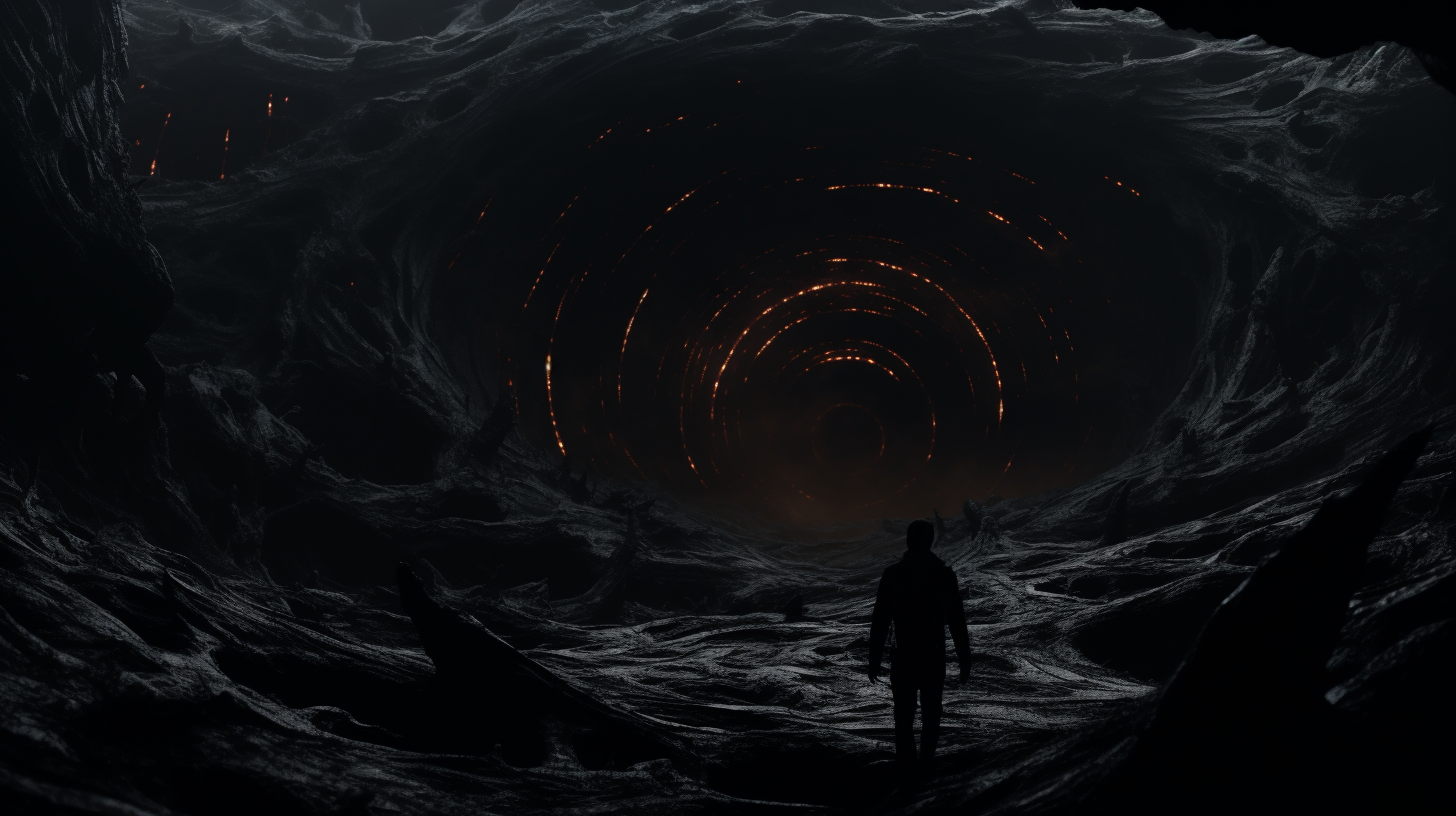
At the very grand scale, such as when we explore the cosmos or contemplate the idea of multiple universes, or at the very small scale, when we delve into the quantum world, our scientific concepts become less definitive and more speculative. This is because our ability to directly observe and measure phenomena at these scales is limited, often requiring complex, indirect methods or advanced theoretical models. However, these limitations do not devalue the science. Instead, they serve as driving forces, pushing the boundaries of human knowledge, inspiring new questions, and leading us towards new paths of discovery. Thus, as we delve into the theories and possibilities of our universe – or potentially, universes – it’s vital to keep in mind that the science is ever-evolving, open to debate, and ripe for future exploration.
The Relativity of Scientific Absoluteness
At its core, science is a systematic process of observation, experimentation, and interpretation aimed at understanding the natural world. However, a common misconception is that science seeks to produce absolute, unchanging truths. The reality is much more nuanced. While scientific theories and laws represent our best current understanding of the universe, they are by no means infallible or final.
This is especially relevant when dealing with the macroscopic and microscopic extremes of our universe—the very grand scale, such as galaxies, black holes, and the structure of the universe itself, or the very small scale, such as subatomic particles and quantum phenomena. In these realms, our understanding is continually challenged and reshaped.
Uncertainties at Grand Scales
When looking at the grand scale of the universe, our understanding is often based on indirect observation and inference. For example, we cannot directly touch a star or visit a black hole. Our knowledge of these phenomena comes from analyzing the light and other forms of radiation they emit. Given the vastness of the universe, we must also grapple with the limitations of our observation points and the speed of light itself.
Theories like general relativity provide excellent predictions about the behavior of massive objects and the structure of space-time, yet they are still subject to refinement and revision as we develop new technologies and observational techniques. The proposition of dark matter and dark energy, for instance, fundamentally challenges our understanding of gravity and the expansion of the universe.
Mysteries at Tiny Scales
The situation becomes even more intriguing at the quantum level. Quantum mechanics, the theory that governs the very small, is notoriously counter-intuitive. Particles can exist in multiple places at once, can be entangled such that the state of one instantaneously affects the state of another, regardless of distance, and the act of observing a particle changes its state. Quantum mechanics and general relativity—our best theories for the very small and the very large, respectively—are fundamentally incompatible. This discord presents one of the most profound mysteries in modern physics: how can we reconcile the laws governing the smallest particles with those governing the cosmos? Thus, the more we explore the very grand and the very small, the more apparent it becomes that our scientific theories are not definitive. They are approximations, interpretations of reality that are constantly being revised and refined. This is not a weakness, but rather a testament to the adaptive and progressive nature of science itself.
The Process of Science: From Hypotheses to Peer Review
Science, as a dynamic and evolving field, operates on a rigorous, structured methodology designed to generate and refine our understanding of the natural world. While the exact steps can vary across different scientific disciplines, the general process often includes the following stages:
- Observation and Questioning
The first stage of scientific inquiry is observation, where scientists notice a phenomenon or pattern in the natural world. These observations raise questions and lead to curiosity about the underlying mechanisms or causes - Formulating Hypotheses:
Scientists use their observations to formulate hypotheses—tentative, testable explanations for the phenomena in question. These hypotheses are predictive statements that can be either supported or refuted through experimentation - Data Collection and Experimentation:
Scientists then design and conduct experiments or studies to collect data relevant to their hypotheses. This data collection process can take many forms, from laboratory experiments to field observations or computer simulations. - Analysis:
Once the data has been collected, scientists analyze it to see whether it supports or refutes their hypotheses. This often involves using statistical techniques to determine if observed effects are significant and not due to chance. - Interpretation and Conclusion:
Based on the data analysis, scientists draw conclusions about their hypotheses. If the data supports the hypothesis, it adds to the body of evidence for that explanation. If it doesn’t, the hypothesis may need to be revised or discarded. - Peer Review
A crucial part of scientific research is the peer review process. Scientists write up their findings and submit them to scientific journals for review. Independent experts in the field (the peers) scrutinize the research for any flaws in the methodology or interpretation. - Publication and Further Research:
If a study passes peer review, it gets published and shared with the scientific community. Other scientists can then replicate the study or build upon it, further refining our understanding of the phenomenon.This process is iterative and cyclical, with new questions and hypotheses emerging from the results of previous studies. It is through this rigorous, continual process that science evolves and advances our understanding of the universe.
Evolution of Scientific Understanding: The Constant Pursuit of Knowledge
Scientific understanding is a journey, not a destination. As our technological capabilities advance and we accumulate more data, our comprehension of the universe, from the minutest particles to the grand cosmic scale, undergoes a process of continuous evolution and refinement.
Scientific Revolutions and Paradigm Shifts
Throughout history, there have been numerous instances where accumulated evidence has led to a radical change in how we understand a particular scientific concept, a phenomenon referred to as a “paradigm shift.” These are often the result of groundbreaking discoveries that challenge the established scientific consensus and require us to reinterpret what we thought we knew. A classic example is the shift from the geocentric model of the universe, which posited that the Earth was the center of the universe, to the heliocentric model, where the Earth and other planets revolve around the Sun.
Progress Through Incremental Advances
Aside from these dramatic shifts, most scientific progress occurs through gradual, incremental advances. As scientists gather more data, they refine, expand, or tweak existing theories to better align with the new evidence. For example, the theory of evolution has been greatly refined since Charles Darwin’s time, as genetic research has added a new dimension to our understanding of how species change over time.
Role of Technological Innovation
Technological advancements often drive these leaps and bounds in scientific knowledge. New tools and technologies allow scientists to gather more data and probe phenomena at scales or in ways that were previously impossible. For instance, the invention of the telescope revolutionized astronomy, while developments in computing have dramatically increased our ability to model complex systems.
The Importance of False Starts and Dead Ends
It’s crucial to note that the scientific process also involves taking “wrong turns” or hitting dead ends. A hypothesis may be proven wrong, but that in itself is a form of progress, as it helps to narrow down the range of plausible explanations and brings us closer to the truth.
In the grand scheme of things, science is an ongoing journey of discovery. Our understanding of the universe is always provisional, ready to be revised in light of new evidence. This is not a flaw of science but its greatest strength: it is self-correcting and always open to refining its theories to get closer to the truth. This dynamic nature of science, its flexibility and adaptability, is what makes it such a powerful tool for understanding our world and universe.
Pushing the Boundaries: New Scientific Findings and an Even Larger Universe
Scientific advancement, fueled by cutting-edge technology and research, is shedding light on the previously unimagined vastness of our universe, pushing the limits of our knowledge and understanding.
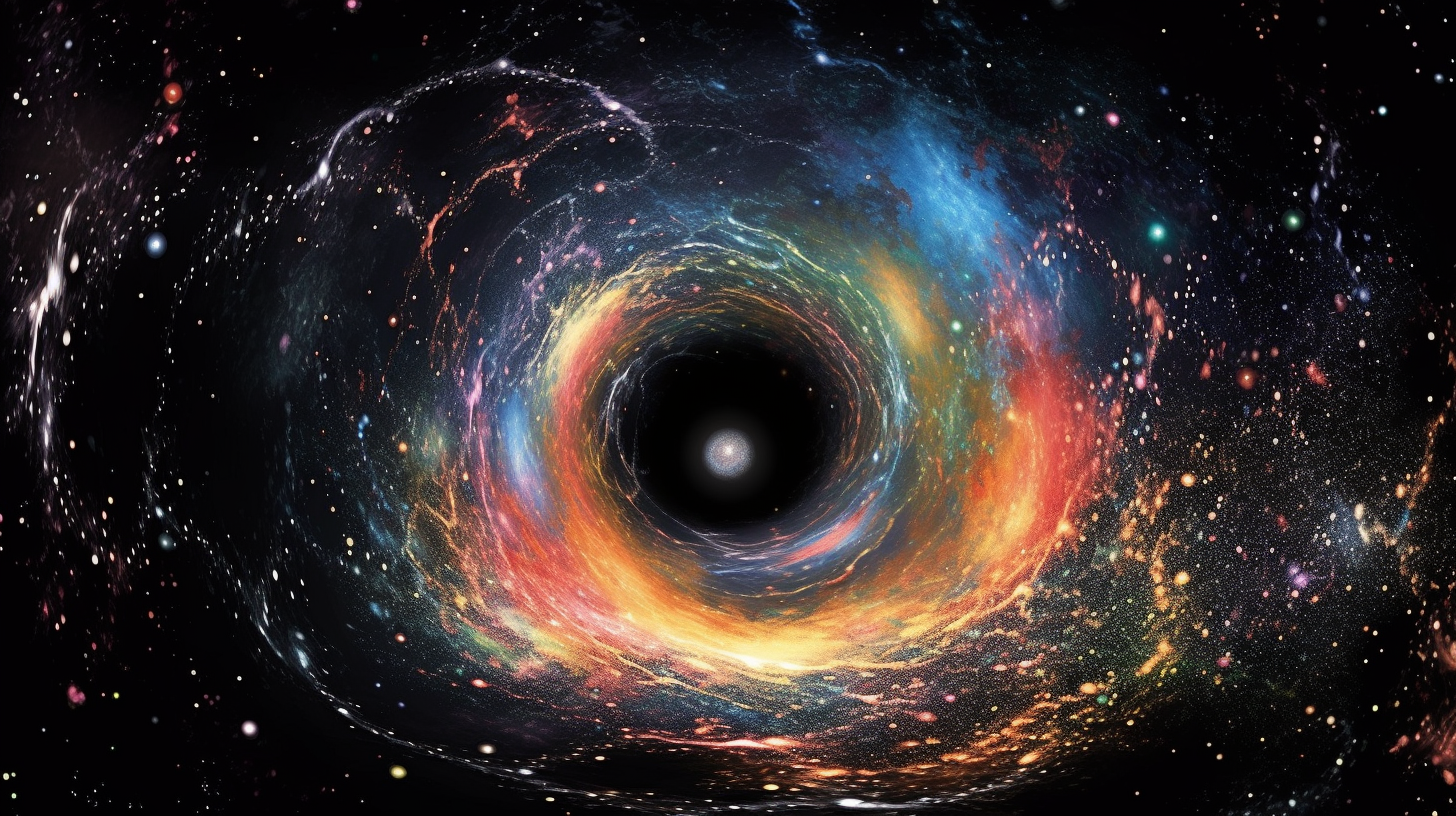
In recent years, theories surrounding the concept of a “multiverse” have risen to prominence. This idea posits that our universe might merely be one within an endless array of universes, each dictated by their unique set of physical laws and properties. The origins of these theories can be traced back to a myriad of physics disciplines, including quantum mechanics, cosmology, and string theory.
Further pushing the boundaries of our understanding is the notion that our universe might be a product of a black hole from another universe. This radical interpretation offers a new perspective on the origins of our universe. Despite being speculative and yet unproven, this theory suggests the potential for each black hole to spawn a new universe, thus resulting in an unceasing proliferation of universes within universes. Our understanding of the universe’s size and scale has also been profoundly challenged by discoveries related to dark matter and dark energy. These invisible entities, which constitute roughly 95% of the universe, have added layers of complexity to our understanding of the universe. Dark matter, which is primarily detected through its gravitational effects, along with dark energy, a mysterious force responsible for accelerating the universe’s expansion, suggest that our universe’s dimensions far exceed our current observable limits.
The study of the Cosmic Microwave Background (CMB), the faint afterglow of the Big Bang, has provided valuable insights regarding the universe’s size, age, and composition. The fluctuations observed in the CMB might also hold the keys to understanding the universe’s shape and scale.These groundbreaking findings have drastically altered our view of the universe. Even though they raise more questions than they answer, they broaden our understanding of the cosmos. Our continued exploration and comprehension of these phenomena could reveal that our universe—or perhaps multiverse—is far larger and more intricate than we ever imagined.
The implications of such a vast and complex cosmos for our understanding of existence and humanity’s place within it are profound. A universe of such enormity compels us to reassess our sense of significance. In this cosmic context, our planet and even our galaxy may seem inconsequential. However, our capacity to understand, investigate, and contribute to the knowledge of such a colossal system reaffirms humanity’s unique and vital role in this grand cosmic theater. The propositions of a multiverse and a universe birthed from black holes underline an inherent interconnectedness. Each part, regardless of its size or remoteness, might have a role in the creation of other cosmic entities. This principle of interconnectedness also extends to our relationships with each other and our planet.
The possibility of other universes, each governed by its unique set of physical laws, challenges our understanding of absolute truths. This shift in perspective could have a significant impact on our philosophical and metaphysical explorations concerning the nature of reality, existence, and consciousness. An infinite universe or multiverse paves the way for a plethora of existential and philosophical questions. Could there be life in other universes? Could different laws of physics allow for different forms of life or consciousness? How does the concept of infinity affect our understanding of the beginning and end of time?
These radical scientific developments also stand to profoundly impact human culture. We’re on the precipice of a new era of understanding, where age-old beliefs are challenged and our place in the cosmos could be radically redefined. This new understanding of our place in the universe will inevitably permeate human culture, influencing everything from religion and philosophy to art and literature. As we grapple with these revelations, our cultural and intellectual landscape will evolve, offering new avenues for exploration and expression.
The greater our understanding of the universe, the greater our appreciation for our existence and our potential. As we continue to explore the cosmos and our place within it, we might find that we are both smaller and larger than we ever imagined – small in physical scale, but vast in our capacity to comprehend, appreciate, and explore the mysteries of the universe.
Overview of the Multiverse Theory’s Origin
Human speculation and storytelling have toyed with the idea of multiple or parallel universes for centuries. Variations of this concept have appeared in diverse forms within mythology, philosophy, and fiction. However, the serious scientific discussion around this concept only began to take shape in the 20th century.
Midway through the 20th century, one of the initial scientific explorations of the multiverse surfaced with the development of quantum mechanics. Physicist Hugh Everett III proposed the “Many-Worlds Interpretation” in 1957 to explain the seemingly erratic behavior of particles at the quantum level. According to Everett’s theory, each quantum event generates a bifurcation in the universe, resulting in an infinite number of parallel universes, each with a unique combination of possible outcomes. In the 1980s, the idea of cosmic inflation, initially proposed by Alan Guth to explain the rapid expansion of the universe post-Big Bang, was expanded upon by cosmologist Andrei Linde. Linde proposed that if inflation occurred once, it could potentially recur, leading to the creation of multiple “bubble universes” within a larger multiverse.
The development of string theory added yet another dimension to the idea of a multiverse. String theory proposes that all particles and forces emerge from one-dimensional strings vibrating at different frequencies. However, the complex mathematics underpinning string theory allows for a multitude of possible string configurations, giving birth to a vast “landscape” of potential universes, each governed by unique laws of physics. More recently, physicists such as Lee Smolin and Nikodem Popławski have proposed theories suggesting that our universe could be the product of a black hole within another universe. This concept, known as black hole cosmogenesis, could imply an endless regression of universes within universes, each producing new universes via black holes.
Despite the speculative nature of these theories, they have provoked much debate within the spheres of cosmology and theoretical physics, thereby opening up new frontiers in our understanding of the universe and our place within it.
Our Understanding of the Multiverse Theory has Evolved Over Time
The notion of the multiverse was first introduced into the scientific community, it was met with a wave of skepticism. Despite the initial reluctance, the concept began to steadily gain support as it hinted at potential solutions to a multitude of unresolved issues within quantum physics, cosmology, and string theory.
One pivotal turning point in our understanding of the multiverse theory was the introduction of the Many-Worlds Interpretation in quantum mechanics. The revolutionary idea that each quantum event could give birth to its own distinct universe was a drastic deviation from traditional interpretations and propelled the concept of the multiverse into the sphere of serious scientific discourse. Further fueling the concept of the multiverse was the theory of cosmic inflation. This theory proposed the existence of numerous “bubble universes” springing forth from periods of inflation, thereby providing a cosmological framework to house the multiverse. As time went on, the inflationary multiverse model underwent various refinements and found incorporation into a range of other theories.
With the advent of string theory, the multiverse theory encountered a new path for evolution. The proposed existence of countless possible configurations for one-dimensional strings led to the conception of a landscape teeming with potential universes. This development added another layer of complexity and possibility to the ever-evolving multiverse theories. More recently, the concept of black hole cosmogenesis has offered a fresh perspective on our understanding of the multiverse. This innovative theory suggests an infinite cycle of universes birthed from black holes, introducing yet another potential mechanism for the creation of multiple universes.
The multiverse remains a topic of fervent debate and intense study within the scientific community. Despite the absence of empirical evidence, the theoretical potential of the multiverse continues to drive research in this field. As new theories, models, and observations continue to emerge, they hold the promise of providing the necessary empirical evidence to either confirm or refute the existence of the multiverse. This promise stokes the fire of discovery and could lead to further evolution in our understanding of this complex and intriguing concept.
Current Understanding of Black Holes and Singularities
Black holes are amongst the most intriguing entities in our universe, boasting gravitational forces of such intensity that once something, even light, crosses their event horizon, escape becomes impossible. This powerful gravitational pull originates from a massive amount of matter condensed into an extraordinarily compact volume.
Black holes, as per prevailing theories, typically form from the remnants of massive stars following a supernova explosion. Once a star with a mass significantly larger than the Sun has exhausted its nuclear fuel, it can no longer sustain its own weight and consequently collapses under its intense gravity. If the mass of the collapsing star is sufficient, the result of this implosion is a black hole. The anatomy of a black hole can be primarily delineated into two main components: the event horizon and the singularity. The event horizon can be understood as the ‘point of no return,’ a boundary within which anything that enters is irrevocably caught in the black hole’s gravitational pull. At the very heart of a black hole lies the singularity, an area where matter is posited to reach infinite density and where the fabric of space-time is infinitely curved.
This concept of singularities, as outlined by the general theory of relativity, denotes points where space-time curvature attains infinity. Here, our conventional understanding of physics, and its operational principles, are deeply challenged as our mathematical models fall short in their ability to describe such extreme conditions. A shift in scale, delving into the quantum realm, proposes an alternate perspective on singularities. Scientists have suggested that quantum effects might ‘soften’ the singularity, potentially substituting it with a quantum foam or a loop quantum gravity state. This implies that space-time at the core of a black hole might not be infinitely dense, prompting a significant reshaping of our understanding of these cosmic phenomena.
Some scientists have also put foth the notion that black holes could serve as conduits to other universes or different areas of our universe. This idea primarily hinges on solutions derived from Einstein’s field equations that predict the existence of wormholes. However, these structures remain theoretical, and the question of their stability under realistic conditions is a topic of ongoing debate within the scientific community. The renowned physicist Stephen Hawking introduced the concept that black holes are not entirely ‘black,’ but emit small quantities of thermal radiation due to quantum effects in the vicinity of the event horizon. This phenomenon, known as Hawking Radiation, would ultimately lead to the gradual evaporation and demise of black holes over cosmological timescales.
The Need for Further Research
In spite of significant strides in our understanding of black holes, they continue to shroud many mysteries. Ranging from the information paradox to their role in galaxy formation and the very nature of singularities, black holes serve as fertile ground for further exploration in both theoretical and observational astrophysics.
In the boundless expanse of the universe, our comprehension of physics is bifurcated into two domains. On one end of the spectrum, we have the quantum realm, which lays bare the behavior of particles on the microscale, while on the other, the theory of general relativity presents a compelling explanation of gravitational phenomena and cosmic bodies of massive scale. However, when these domains converge at the extreme conditions found in black holes, particularly at the singularity, inconsistencies arise. These expose a gaping void in our understanding, highlighting the essentiality for further investigation.
The quest for a theory of quantum gravity ensues, one that would be the conjugal bond between quantum mechanics and general relativity. It’s a theory that is poised to be the Rosetta Stone of the universe, decoding the mysteries of both the infinitesimal and the infinite. Theoretical pathways like string theory and loop quantum gravity have been paved toward this union, yet a definitive understanding eludes us. It’s a profound pursuit that echoes the necessity for more intensive research. Further complicating our understanding is the inherent difficulty in studying black holes. They are the universe’s ultimate paradox, entities so heavy that not even light can break free from their gravitational grasp, rendering them virtually invisible. We’ve gleaned indirect evidence of their existence through the gravitational waves they send rippling through space-time and their influence on neighboring matter. But these are mere fragments of a larger, obscured picture, which prompts the demand for innovative observational techniques and technologically advanced instruments.
Simultaneously, the theories of wormholes and multiverses have been crafted in the mathematical language of the cosmos, but empirical evidence to substantiate them remains elusive. The question of how to harvest data that could either uphold or debunk these theories remains unanswered, placing a stumbling block on their acceptance in the scientific community. A further dimension of complexity is introduced with the black hole information paradox, a conundrum born out of Hawking’s radiation theory. The crux of this paradox is the uncertainty about the fate of information about matter that succumbs to a black hole’s inexorable pull. The tenets of quantum mechanics argue that information can’t be obliterated, yet general relativity paints a different picture of black holes as cosmic erasers of information. Not to be forgotten are the enigmatic twins of dark matter and dark energy. These unseen constituents of the cosmos, shrouded in a veil of mystery, constitute the majority of our universe. Unraveling the intricacies of these phenomena could potentially revolutionize our understanding of black holes and multiverses. The investigation of these cosmic chameleons is instrumental to our quest of understanding the universe.
Despite the significant strides we’ve made in our quest to understand our universe, from the nature of black holes to the concept of multiverses, much remains in the shadows. Science, however, thrives on these unknowns. The relentless evolution of knowledge, spurred on by the insatiable human curiosity, is what propels us further into the uncharted frontiers of discovery.
Wormholes and Other Mechanisms of Universe Connection
Wormholes, otherwise known as Einstein-Rosen bridges, originate from a theoretical prediction within Einstein’s theory of general relativity. Essentially, these are conceived as ‘shortcuts’ within the fabric of space-time, linking two separate regions of space or even distinct universes. Each wormhole possesses two ends, situated in different points in space, connected through a conduit-like structure.
The structure of a wormhole is believed to comprise a ‘throat’ that segues into two ‘mouths.’ However, a significant challenge to the existence of wormholes is their stability. According to general relativity, wormholes would collapse nearly instantaneously, thereby rendering travel through them impossible. Theoretical physics suggests that exotic matter or negative energy, both of which are contentious and remain unproven, could potentially stabilize a wormhole. Certain scientists posit a link between wormholes and quantum entanglement, a phenomenon wherein the state of two particles is instantly interconnected irrespective of the distance separating them. This has inspired notions of ‘quantum teleportation’ and the potential for instantaneous transmission of quantum information across vast distances, possibly even spanning different universes.
White holes, though entirely theoretical and yet to be observed, are another prospective mechanism facilitating connections between universes. These entities are essentially the inverse of black holes – while nothing can escape a black hole after crossing its event horizon, nothing can enter a white hole. Some scientists suggest that black holes might evolve into white holes, ejecting all the matter they have consumed into a different region of space or even another universe. This could potentially serve as a mode of connection between universes. Within the realm of quantum mechanics, the concept of quantum foam or spacetime foam has been proposed. According to this theory, at the smallest scales, the fabric of space-time consists of ever-fluctuating tiny bubbles or ‘wormholes’. This is linked to the concept of ‘bubble universes’, where different universes could form and expand within these bubbles in the quantum foam.
Other hypotheses involve cosmic strings – ultra-thin, high-density structures in space-time, or branes, higher-dimensional structures in string theory. These could theoretically warp space-time sufficiently to create pathways between distinct areas of the universe or even different universes. While all these potential mechanisms are compelling and signify the frontier of our current understanding of the universe, they remain highly theoretical. A great deal more investigation and empirical evidence is required before they can be integrated into our understanding of the universe.
Evolution and Limitations of Our Current Knowledge
The Evolution of Our Understanding
Our understanding of these concepts has significantly evolved over time, particularly as our comprehension of quantum mechanics and general relativity has deepened. The idea of wormholes was first proposed in 1916, but it was not until the 1980s that Kip Thorne and his students at the California Institute of Technology explored their potential applications for time travel or interstellar travel. Similarly, white holes were first theorized in the 1960s as time-reversed black holes, but recent theoretical work suggests they may serve as a connection between universes in a multiverse model. The concept of quantum foam was first introduced by John Wheeler in the 1950s, and the idea of bubble universes came into existence in the late 20th century with the advent of inflationary cosmology.
Cosmic strings and branes have their origins in the development of string theory in the late 20th century and continue to be an active area of research in theoretical physics.
Limitations of Our Current Knowledge
Despite the significant advances made, our current knowledge of these universe connection mechanisms is fundamentally limited. The major challenge lies in the difficulty of empirical testing. While these concepts are mathematically consistent and backed by robust theoretical frameworks, we lack the technological capabilities to observe or experiment with these phenomena directly. This makes it hard to verify or falsify these theories. Furthermore, there are theoretical challenges as well. The merging of quantum mechanics and general relativity, two of the most successful theories of physics, into a single framework of quantum gravity, is a significant unsolved problem in theoretical physics. This unification is necessary for a complete understanding of phenomena like wormholes, black holes, and the early universe.
Our understanding is also limited by the so-called ‘cosmological horizon’ – the limit to how far we can observe the universe. This boundary is set by the speed of light and the age of the universe and prevents us from gathering data beyond a certain point. While we have made significant strides in understanding potential universe connection mechanisms, we remain in the early stages. As we continue to push the boundaries of our knowledge, these theories may be modified, replaced, or even confirmed. It underscores the fluid, evolving nature of scientific knowledge and the need for continued exploration and questioning.
How the Multiverse Theory Might Address Current Puzzles
The Fine-Tuning Problem
One of the longstanding puzzles in cosmology is the fine-tuning problem. The physical constants in our universe seem to be exquisitely fine-tuned to allow for the existence of life as we know it. If these constants were just slightly different, life might not be possible. The multiverse theory offers a potential solution to this problem. If there are an infinite number of universes, each with potentially different physical constants, then it’s not surprising that we find ourselves in one where the conditions are just right for life.
The Flatness Problem and the Horizon Problem
These are two problems related to the Big Bang Theory and the current state of our universe. The flatness problem refers to the puzzling observation that our universe is incredibly flat and homogeneous, contrary to what might be expected following a big bang event. The horizon problem refers to the uniformity of the cosmic microwave background radiation, which suggests that different regions of the universe were in thermal contact, even though, given the speed of light, there has not been enough time for them to interact. Inflation theory, often paired with multiverse theory, suggests a period of rapid expansion in the early universe that could solve both of these problems. In the multiverse context, inflation could have given birth to multiple, distinct universes, each potentially with its unique inflationary history.
Dark Energy and Dark Matter
Dark energy, a mysterious force causing the accelerated expansion of the universe, and dark matter, an unknown form of matter that does not interact with light but can exert gravitational force, remain two of the most significant unsolved puzzles in cosmology. Multiverse theory could provide a context in which these phenomena make sense. If different universes have different physical laws and constants, dark energy and dark matter might be common in some universes and absent in others.
Baryon Asymmetry
The universe appears to have much more matter than antimatter, a puzzle known as baryon asymmetry. If our universe were the only one, this would be tough to explain, as the Big Bang should have created equal amounts of matter and antimatter. However, in a multiverse, it’s possible that other universes contain more antimatter, balancing out our matter-dominated universe.
These are just a few examples of how the multiverse theory might provide answers to some of the biggest questions in cosmology. However, while this theory offers compelling potential solutions, it also raises new questions and challenges, highlighting the fluid nature of scientific understanding and the constant pursuit of knowledge.
Implications of these theories for existing religions
We have often reflected on how these scientific theories, grand as they are, sit uncomfortably with the worldviews proposed by many religions. We must clarify upfront: We bear no ill will towards those who choose to subscribe to any religious belief. This is merely a perspective seen through the lens of a scientist, rooted firmly in empiricism and skepticism.
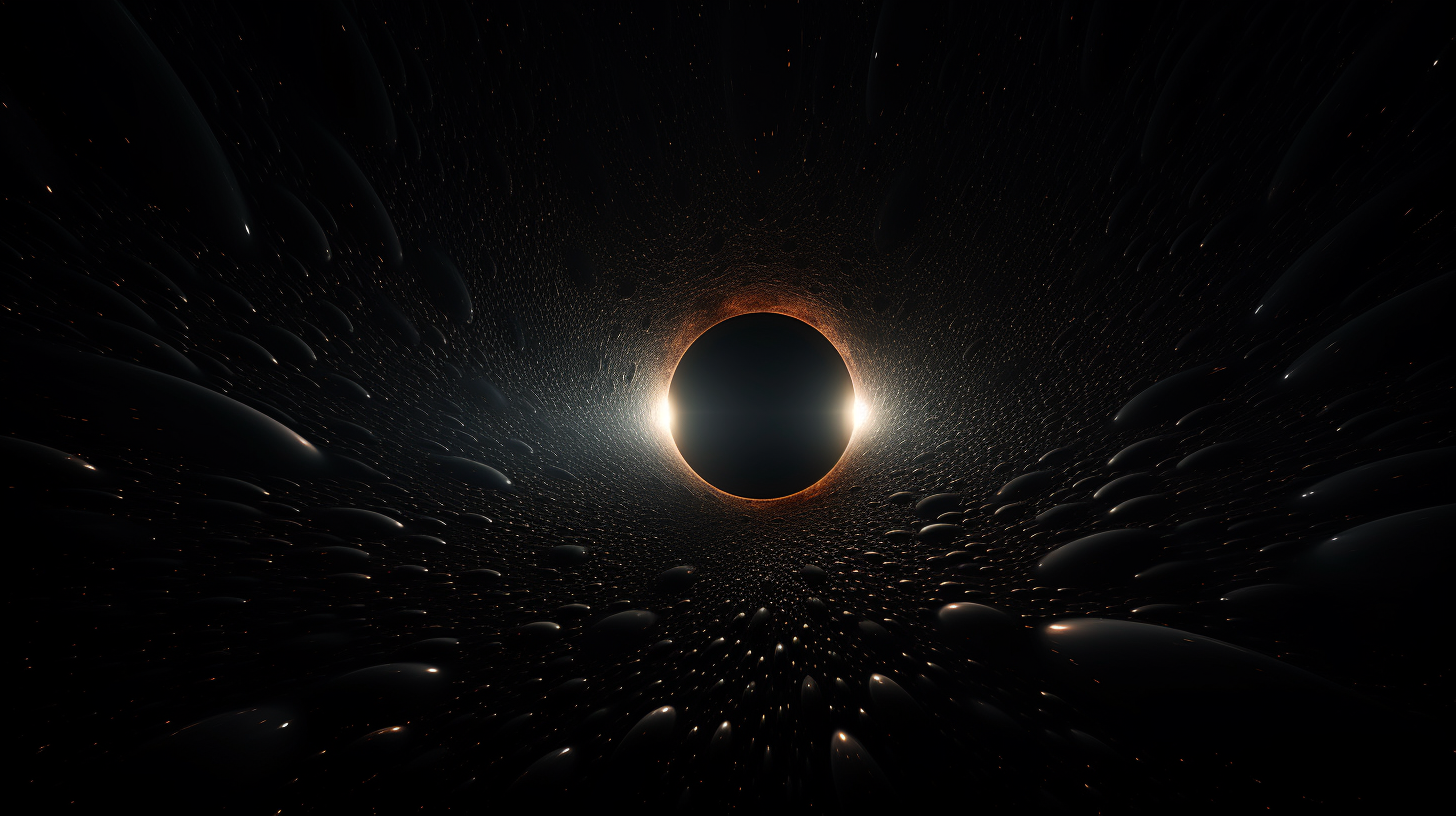
Many religions were born out of a need to explain the unexplainable, to bring a sense of order to what seemed chaotic. In a time before the advent of science, these stories, myths, and doctrines served to explain phenomena that baffled our ancestors. Zeus throwing lightning bolts, Ra pulling the sun across the sky – these were narratives that made sense of the world. However, as we learned more about the universe, many of these narratives have been replaced by scientific explanations. We now understand that lightning is the result of atmospheric electricity, not the wrath of Zeus. The sun’s journey across the sky is due to Earth’s rotation, not Ra’s heavenly labor.
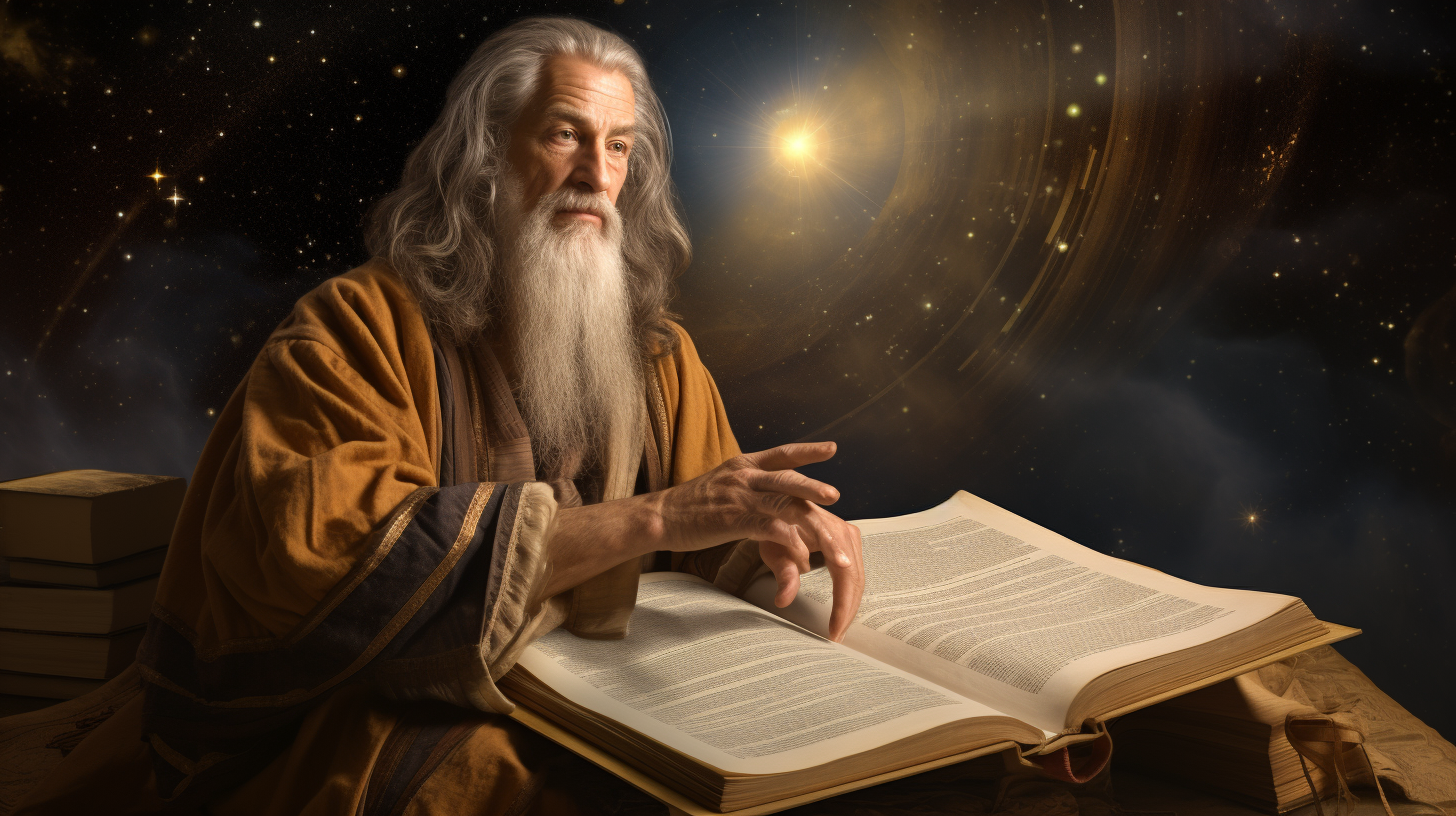
In the face of such expansive concepts as the multiverse, our understanding of existence itself is fundamentally shifting. If our universe is but one of an infinite number, each potentially governed by different laws of physics, what room does this leave for doctrines that were formed under the assumption that we were at the center of all creation? We don’t dismiss the value religions have in providing spiritual comfort and moral frameworks, but as far as I am concerned, their cosmological claims fall short. If a religion had a universal truth at its core, wouldn’t that truth stand tall in the face of scientific scrutiny? If so, wouldn’t science be an unnecessary endeavor? Here’s the crux of our perspective: Keep an open mind. Do not allow the boundaries of ancient texts to limit your understanding of the universe. Let curiosity and skepticism guide your quest for truth. The universe is a grand, complex, and often counterintuitive theater of phenomena. Let’s explore it with our eyes wide open, unburdened by presuppositions, and exhilarated by the mysteries that await. And maybe, just maybe, we’ll edge closer to the grand truth – if such a thing even exists.
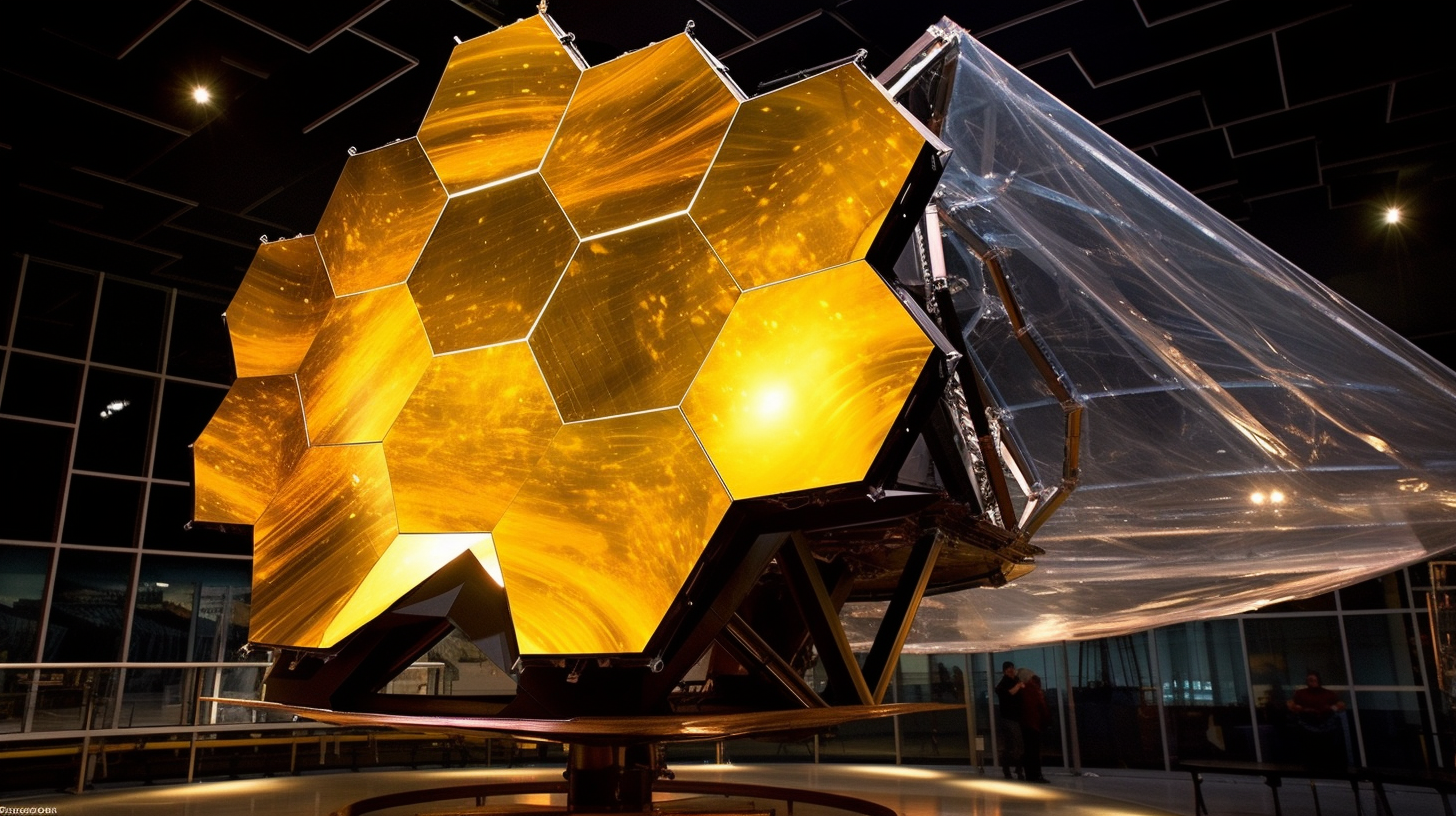
Our tools of observation and discovery have become exceedingly more powerful, piercing the veil of the cosmos and revealing wonders that our ancestors could hardly have dreamed of. The Hubble Space Telescope presented us with jaw-dropping visuals of distant galaxies and nebulae. And now, the James Webb Space Telescope promises to push the boundaries even further, allowing us to look back at the universe’s early days. But when we look out into the farthest reaches of the universe, what do we see? We see stars forming and dying, galaxies colliding and merging, light bending around massive objects due to the force of gravity. What we don’t see, despite any personal beliefs or wishes, is a divine figure etched into the cosmos. There’s no cosmic Christ on the cross, no giant Buddha meditating in the vastness of space, no sign of Zeus, Ra, or any other deity written in the stars. That isn’t to say that such imagery would serve as concrete evidence of a particular faith’s validity. After all, pareidolia – the human tendency to find patterns where none exist, such as seeing shapes in clouds or faces on Mars – is a well-documented phenomenon. But the absence of any such iconography in the cosmos does raise interesting questions.

Why don’t we see divine images or symbols in the cosmos? Could it be because these symbols and figures are human constructs, designed to convey certain spiritual or moral truths rather than provide a literal interpretation of the universe’s workings? Perhaps these religious narratives, as rich and influential as they are, are ultimately products of our human imagination rather than universal truths. Again, our stance isn’t meant to deride anyone’s faith or personal beliefs. Rather, we urge us all to question, to ponder, and to relentlessly seek out the truth, even if it challenges our long-held beliefs. The universe is a grand mystery, and we’ve barely scratched the surface of what there is to know. It’s a humbling endeavor, and one that we are immensely proud and privileged to partake in.
Religions may not adequately explain..
As we push further into the cosmic expanse, peeling back layers of astronomical mystery, we’re forced to confront a stark reality: the universe is impossibly vast, intricate, and often defies our intuitive understanding. Its grandeur is humbling, inspiring a sense of awe and wonder that can feel very spiritual. In this context, one can’t help but question if our earthly religions, born from human minds constrained by time, culture, and a limited understanding of the natural world, are equipped to encapsulate this reality.
Our religions, you see, emerged in a time when our knowledge of the universe was considerably limited. Our ancestors looked at the night sky and saw a smattering of stars, unaware that each of those twinkling lights was part of a distant galaxy comprising billions of other stars, some of which might host planets of their own. Concepts such as black holes, dark matter, and quantum entanglement were beyond their comprehension, yet these are fundamental aspects of our universe’s structure and behavior. The cosmological narratives offered by our religions are steeped in rich symbolism and allegory, providing moral guidance and a sense of purpose. They also attempt to explain our origins and destiny, to offer comfort and alleviate existential dread. Yet, from a scientific perspective, they often fall short in adequately explaining the universe’s nature and scope. In fairness, it is not the purpose of religion to provide empirical, testable explanations of the universe – that’s the domain of science. However, in an era of unprecedented scientific advancement, the divide between what we know and what we believe can become harder to reconcile for many people. Again, this is not a repudiation of faith. There’s a place for mystery, reverence, and spirituality in our lives. But as we forge ahead, propelled by curiosity and the scientific method, we must be willing to critically examine our beliefs, to adapt and evolve them if necessary, in light of the evidence we uncover.
The journey to understanding our universe is ongoing, and the future promises to reveal truths even more astounding than what we know today. It’s my hope that our spirituality, our sense of wonder and connection to the cosmos, can grow and evolve alongside our scientific understanding. It’s not an easy path, but it’s one that’s worth walking for the sake of knowledge, truth, and our place in this extraordinary universe. What’s intriguing is that we haven’t found definitive cosmic signatures of our earthly religions etched into the fabric of the universe. As I observe the universe through the James Webb Space Telescope, I see no divine figures suspended in the cosmos. No Jesus Christ on a cross, no Buddha under the Bodhi Tree, no signs of Krishna playing his flute. Yet, the universe is teeming with wonders that exceed even the most imaginative of our religious myths and metaphors.
And yes, we’ve heard the argument that God, or any divine entity, is beyond our comprehension, our perceptions, and the tools we use to study the universe. But then, how are we supposed to perceive, understand, and relate to such a divine being? How are we to ascertain their existence, their intentions, their decrees? Through ancient scriptures? Through personal revelations and mystical experiences, which are often contradictory and influenced by cultural conditioning? Through faith, which can sometimes discourage questions and doubts, and which can be manipulated for various ends?
Science, in contrast, encourages questions. It thrives on doubts. It doesn’t claim to have all the answers, but it provides a method to seek them. Science doesn’t require faith, but evidence. It values skepticism, but also open-mindedness. It’s not free from errors or biases, but it has mechanisms for self-correction. It can be dry and technical, but also poetic and awe-inspiring.
Is science perfect? No, far from it. But it’s one of the best tools we have for understanding our universe. It has expanded our horizons, enriched our lives, and brought us closer to the truth, even if that truth is sometimes unsettling or humbling.
My invitation to you, of the author if this text, dear reader, is to embrace the spirit of science. Be curious. Ask questions. Seek evidence. Be open to changing your beliefs based on new information. It doesn’t mean you have to abandon your faith or your spiritual practices. But be willing to expand and refine them based on your growing understanding of the universe. I, for one, find great solace and joy in knowing that I’m part of this grand cosmic drama, that I’m made of stardust, that I’m a tiny spark of consciousness in a universe full of wonders. And no religious doctrine or dogma can diminish that awe and reverence. At the end of the day, it’s not about discarding religions, but about evolving them, along with our consciousness and our understanding of the universe. This, I believe, is the path to truth, wisdom, and freedom.
The importance of freedom of information, opinion exchange, and scientific exploration
Let’s pivot our focus now to a topic that is as integral to our quest for understanding as the scientific method itself: the freedom of information, exchange of opinion, and the unfettered exploration of scientific ideas. This might seem like a tangent to our discussion about the nature of the universe and religion, but I believe it’s fundamentally interconnected.
Knowledge, in its purest form, is the cornerstone of humanity’s progress. Without free access to information, we restrict ourselves from the collective knowledge of our species. One mind, however brilliant, can only comprehend and achieve so much. It’s when we share information, when we scrutinize and iterate on each other’s ideas, that we begin to see advancements. But how can we do that if our voices are silenced, if our ideas are deemed too radical, too contradictory to the prevailing orthodoxy? This is where the freedom of opinion exchange comes into play. It’s vital that we create spaces where we can challenge the status quo, voice our unique perspectives, and engage in constructive debates. This isn’t just about promoting free speech. It’s about fostering an environment where new ideas are not only welcomed but celebrated, where dissent is seen not as a threat but as a catalyst for progress. Scientific exploration, too, thrives on these freedoms. It needs the freedom to ask big questions, to test novel hypotheses, to make mistakes, and to learn from them. It needs the freedom to venture into unknown territories, to disrupt established theories, and to bring new perspectives to old problems.
But let’s not be naive. These freedoms come with responsibilities. The freedom of information demands that we respect and protect each other’s privacy. The freedom of opinion exchange requires that we engage in respectful and empathetic dialogue, that we listen as much as we speak, that we challenge ideas, not individuals. And the freedom of scientific exploration calls for rigorous ethics, for the acknowledgment of uncertainties, and for the commitment to transparency and reproducibility. The world is complex, and so is our understanding of it. In this complexity, there’s a place for faith and spirituality, for science and skepticism, for mystery and wonder. Let’s make sure we have the freedom to explore this complexity, to deepen our understanding, to challenge our assumptions, and to evolve our beliefs.
Remember, the universe is vast and beautiful, and we are all a part of it, as explorers, learners, and bearers of its stories. Let’s cherish our freedoms and use them wisely, for they are the keys to unlocking the secrets of our universe.
How these freedoms contribute to our understanding of the universe
As we delve deeper into this discourse, I’d like to emphasize the pivotal role that the freedoms of information, opinion exchange, and scientific exploration play in our journey towards understanding the universe. The interplay of these freedoms is a catalyst for the advancement of our knowledge and is inherently tied to our quest to comprehend the cosmos.
Firstly, the freedom of information is paramount. As we grapple with the enormity and complexity of the universe, the free and open exchange of knowledge becomes our lifeline. We are constantly building upon the discoveries and insights of those who came before us, using their wisdom as a foundation to reach new frontiers. Without the unimpeded flow of information, this process of continuous learning and growth would be obstructed, stifling our collective progress. Secondly, the freedom of opinion exchange is a crucial element of the scientific process. Science is, at its core, a deeply collaborative endeavor. We benefit immeasurably from the opportunity to share and debate ideas, to question and be questioned, to challenge and be challenged. This exchange not only refines our individual perspectives but also propels our collective understanding forward. In a realm where certainties are few and questions are many, diverse viewpoints foster an environment of critical thinking and innovative problem-solving. Lastly, the freedom of scientific exploration acts as the engine driving our journey into the unknown. Our understanding of the universe is marked by constant evolution, by the ceaseless transformation of mystery into knowledge. The liberty to question, investigate, and speculate fuels this process. It allows us to probe the cosmos, to study black holes and singularities, to theorize about multiverses and wormholes, and to continually reframe our understanding of existence.
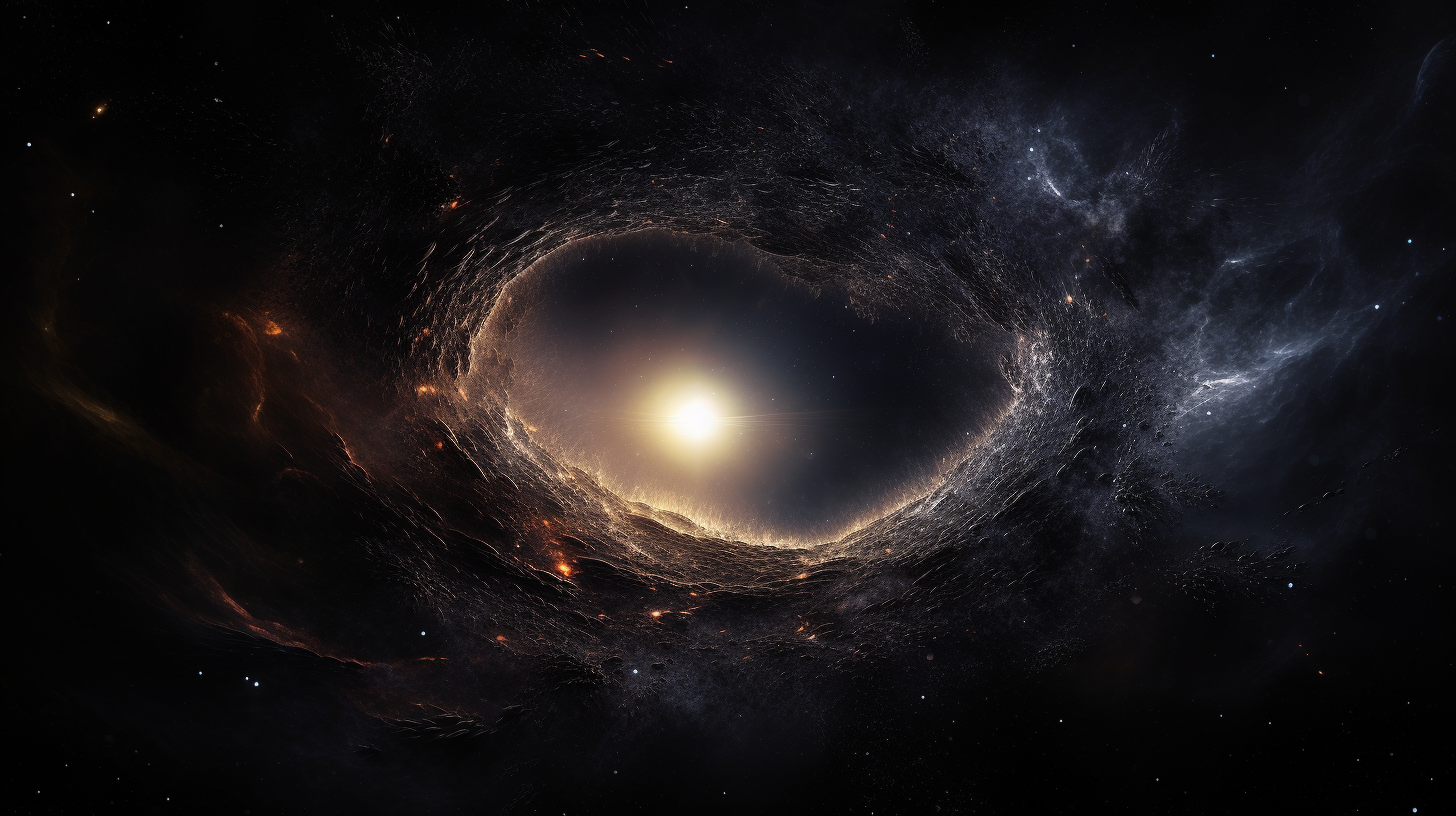
In the face of the above, it’s worth noting that these freedoms are not just tools for understanding the universe; they are also reflections of it. Just as the universe is characterized by its vast diversity and dynamic nature, so too should our intellectual landscape be marked by a plurality of ideas and a commitment to growth and evolution. The freedoms of information, opinion exchange, and scientific exploration don’t just contribute to our understanding of the universe; they are integral to it. Our progress in deciphering the cosmos is intrinsically linked to our ability to foster and protect these freedoms. As we gaze into the vast expanse of the universe, let us remember that our journey of discovery is as boundless as the cosmos itself, and these freedoms are our guides in this grand adventure.
After appreciating the importance of open access to information, we can begin to truly understand the revolutionary implications of our research in crypto incentivized Sybil-proof data exchange. In our interconnected world, information not only needs to be accessible, but it also needs to be securely stored, reliably transmitted, and, importantly, resistant to manipulative attempts to disrupt the system – a concept referred to as Sybil resistance.
Crypto technology, particularly blockchain, has given us powerful tools to tackle these issues. It allows us to create decentralized systems that aren’t controlled by any single entity, reducing the risk of censorship and promoting the free flow of information. Moreover, the use of cryptographic techniques ensures the security and integrity of the data, meaning we can trust that the information we access hasn’t been tampered with. One of the most exciting advancements is the ability to incentivize participation in these networks. With traditional data storage and sharing systems, the onus falls heavily on a centralized authority. In contrast, crypto incentivized models distribute these responsibilities amongst a network of peers. Thanks to the inherent properties of blockchain technology, we can reward participants for their contributions, whether it’s for storing data, verifying transactions, or sharing information.
The peer-to-peer aspect of this system fosters a sense of community and shared responsibility. In effect, it turns every participant into a custodian of the collective knowledge and information. Additionally, this model is particularly effective in promoting the dissemination of scientific research. By incentivizing the sharing of data, we can accelerate the process of peer review, data replication, and overall knowledge distribution, ultimately speeding up scientific progress. The potential of this technology is immense. Imagine a world where scientific discoveries are immediately available to everyone, where collaboration is not limited by borders or institutional walls, and where contribution to the scientific community is rewarded in real time. That is the world we are building with crypto incentivized Sybil-proof data exchange. Our research in this field isn’t just about developing a new technology; it’s about reshaping the way we approach knowledge and information. It’s about ensuring that as we continue to delve deeper into the secrets of the universe, the insights we glean are as boundless and accessible as the cosmos itself.
Decentralized operating system as a potential tool
One of the most promising tools we have for facilitating the free flow of information and promoting scientific exploration is the decentralized operating system (DOS). Unlike traditional operating systems that are governed by centralized entities, a DOS is a collaborative ecosystem run and maintained by its users. It’s not just a tool; it’s a platform that encourages and rewards participation, fosters cooperation, and places power back in the hands of the individual user.

On a DOS, we can host social platforms free from the surveillance and control of any one agency or organization. These platforms are owned and operated by the community, using decentralized voting systems to curate content and maintain moral standards. In this model, ‘private’ means truly private. Private conversations can be end-to-end encrypted, secured not by the promises of a corporation, but by the immutable laws of mathematics and cryptography. With the application of unique zero-knowledge proof group authorization protocols, we can facilitate group meetings that maintain this high standard of privacy. Moreover, a DOS opens the door to a fundamental reimagining of our online ecosystem. For years, tech giants like Google and Facebook have operated under a model that exchanges free services like email and search engines for the right to collect, analyze, and profit from our personal data. However, with the advancements in peer-to-peer and decentralized technologies, we can shift towards a more user-centric model.
Under a DOS, users can access and contribute to a network of services that prioritize privacy and freedom. Instead of companies monetizing user data, the resources required to maintain these services are distributed among the users themselves. This collaborative model, incentivized by crypto economics, ensures that the users, who are the real value creators, are the ones who benefit. DOS is more than just a technology; it’s a potential paradigm shift in our digital lives. As we progress towards a more connected and digitally reliant society, it’s crucial that we do so on our own terms, prioritizing privacy, freedom, and communal ownership. In the face of an ever-expanding universe, it’s essential that our tools for understanding and navigating that universe are as limitless and inclusive as possible.
How such systems could shape our future understanding of the universe
The implications of a decentralized operating system (DOS) for our future understanding of the universe are vast and far-reaching. In our pursuit of knowledge about the cosmos, the systems and tools we use to gather, process, and disseminate information can fundamentally shape the nature of our insights. In the era of Big Data, scientific exploration is increasingly reliant on the ability to collect, store, and analyze massive amounts of information. A DOS, with its inherent capacity for distributed storage and computation, provides an ideal platform for handling such data-intensive tasks. Its decentralized nature ensures that no single point of failure can disrupt the system, enhancing the reliability and robustness of our scientific endeavors. The transparent, community-driven nature of a DOS could have profound implications for the scientific process itself. By decentralizing the custodianship of scientific data, we can eliminate the gatekeeping often associated with scientific publishing, promoting an open and collaborative approach to research. The end-to-end encryption of private conversations and data allows for secure, confidential peer-review and brainstorming sessions, fostering a free exchange of ideas without fear of reprisal or misuse of information.
Beyond these practical implications, the ethos of a DOS mirrors the very nature of scientific inquiry. Just as scientific understanding evolves through the collective efforts of countless individual researchers, a DOS evolves through the contributions of its myriad users. By aligning our technological infrastructure with the principles of our scientific pursuits, we create a synergy that could propel our understanding of the universe to unprecedented heights. In the face of mounting cosmological mysteries – from the nature of dark energy and dark matter to the possibility of multiverses and the true scale of our universe – we need an infrastructure that can keep pace with our ambitions. A DOS, built on principles of decentralization, collaboration, and transparency, holds immense promise in this regard. As we stand on the cusp of new frontiers in our understanding of the universe, the implementation of such a system could be pivotal in shaping our cosmic narrative in the years to come.
Criticisms of the multiverse theory
Despite its fascinating implications and theoretical appeal, the multiverse theory is far from being universally accepted. There are numerous criticisms, some of which are based on philosophical grounds, while others focus on the scientific principles.
One of the most potent criticisms is that the multiverse theory is untestable, and thus, unfalsifiable. Falsifiability is a cornerstone of the scientific method as posited by philosopher Karl Popper. If a theory can’t be tested and potentially proven wrong, it steps into the territory of metaphysics rather than science. The multiverse theory proposes the existence of universes beyond our own that we cannot interact with or observe directly. Therefore, critics argue that it might be impossible to prove or disprove this theory empirically. Another critique centers around the idea of Occam’s Razor, a principle suggesting that the simplest explanation is usually the best one. The multiverse theory, with its posited endless array of universes, each with potentially different physical laws, is certainly not the simplest explanation for our universe’s features. Critics argue that it’s an extravagant hypothesis that multiplies entities needlessly. Additionally, there is the issue of the so-called “measure problem”. Given an infinite number of universes with an infinite variety of physical laws and constants, how can we make meaningful predictions? Some versions of the multiverse theory suggest every event that can occur will occur an infinite number of times, which complicates the process of deriving probabilities from the theory.
There are also debates concerning the theoretical physics behind the multiverse theory. Some physicists question whether inflationary cosmology, quantum mechanics, or string theory, which are often used to support the multiverse concept, indeed imply a multiverse. These theories themselves have unresolved issues and ambiguities. There is a philosophical or aesthetic criticism. Some critics argue that the multiverse theory lacks elegance and simplicity, features that have traditionally been associated with “beautiful” physics. Instead of bringing everything together under a single, unified theory, the multiverse theory seems to make the universe more complicated and disjointed. It’s important to remember that criticism and debate are essential parts of the scientific process. The multiverse theory, like all scientific theories, will continue to be tested, challenged, and refined. In this ongoing exploration, whether the theory ultimately stands or falls, our understanding of the universe will be expanded.
Limitations of our current understanding. The need for continued exploration
Despite the tremendous strides we’ve made in our understanding of the universe, it’s humbling to consider just how much remains beyond our grasp. The more we learn, the more we realize how much we don’t know. As we peer deeper into the cosmos, we encounter more mysteries that challenge our current understanding and assumptions. Our knowledge of the universe is still in its infancy. There are vast domains of reality that are beyond our current theoretical and observational reach.
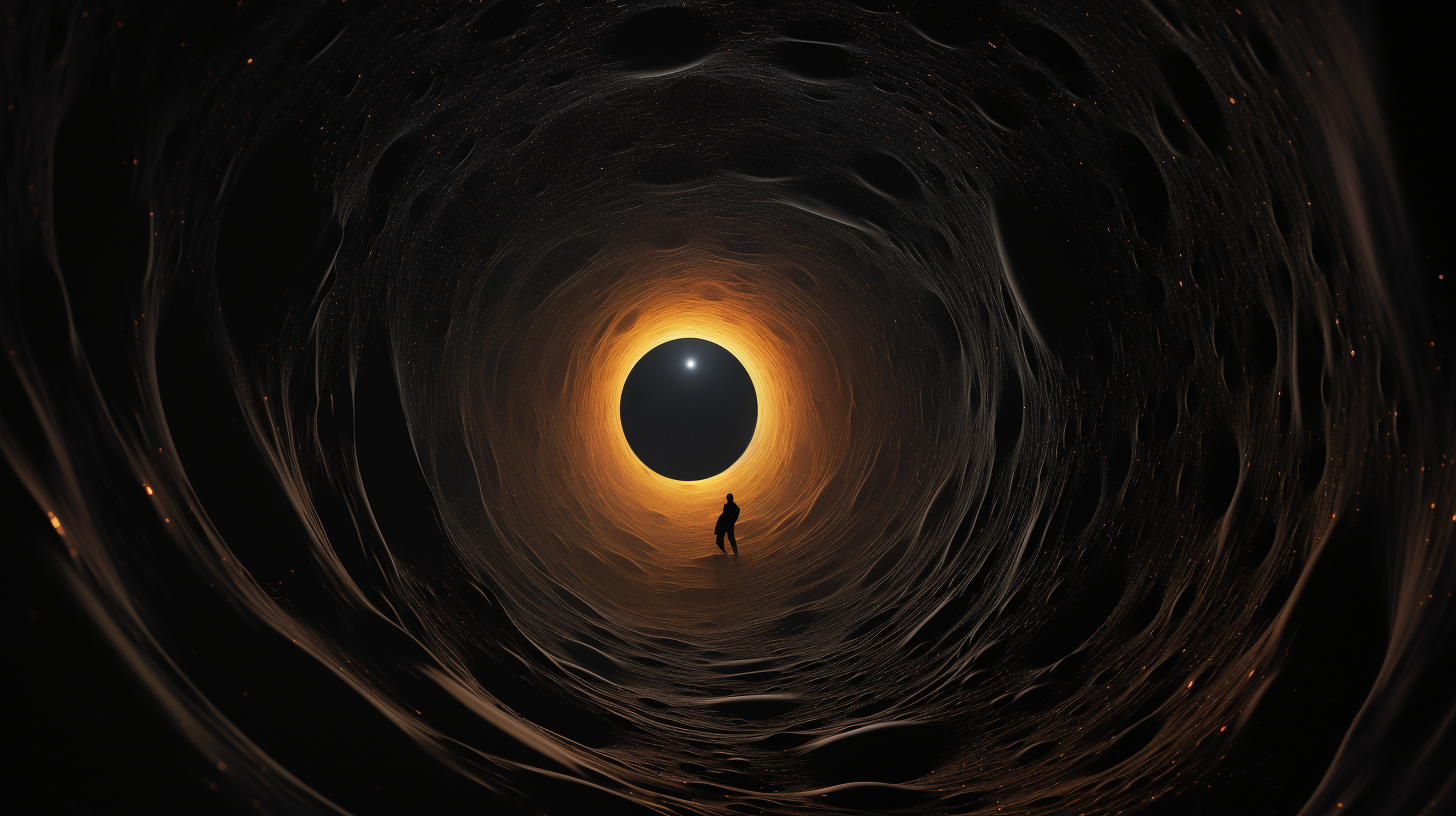
Our understanding of the universe’s nature is limited by our ability to observe and experiment. Current technology limits our ability to detect and measure certain phenomena, especially those that are incredibly small or incredibly far away. Many aspects of quantum physics and cosmology are still shrouded in mystery. For instance, dark matter and dark energy, which together make up about 95% of the universe, remain enigmatic. We know they exist because of their gravitational effects, but we still don’t know exactly what they are. The multiverse theory is another concept that pushes the boundaries of our current understanding and observational capabilities. As intriguing as it is, it poses challenges to traditional scientific methodologies because of its seemingly untestable nature. But just because a theory is currently untestable doesn’t mean it will always remain so.
The history of science is filled with theories that were once considered untestable but were later confirmed through technological advancements or novel approaches. The limitations of our current understanding underscore the need for continued exploration. Science is an evolving journey of discovery. It’s about pushing the frontiers of our knowledge, venturing into the unknown, and uncovering the hidden mechanisms of reality. To do this, we need open minds, critical thinking, and a commitment to follow the evidence, wherever it leads. Remember the words of physicist Richard Feynman: “I think it’s much more interesting to live not knowing than to have answers which might be wrong.” It’s okay not to know. Uncertainty fuels the quest for knowledge. The mysteries of the universe are an invitation to keep exploring, to keep learning, and to keep asking profound questions. And that’s the beauty of science.
Potential implications of this theory for society
As we reach the end of our deep dive into the concept of our universe possibly being nested inside a black hole, it’s clear that this theory, if proven, could dramatically alter not only our understanding of the cosmos but our society as well.
The realization that our universe might just be one of many in a sprawling multiverse challenges our concept of existence and significance. We might have to redefine our place in the cosmos, no longer as inhabitants of a singular, all-important universe, but as tiny constituents of an unimaginably vast multiverse. This could profoundly alter our perceptions of self and identity. If our universe is indeed a child universe birthed by a black hole in another parent universe, this could lead to a paradigm shift in our understanding of cosmology. It offers a new perspective on the creation of our universe, potentially providing answers to questions that the Big Bang theory leaves unaddressed. Such as what existed before the Big Bang and what triggered it? Thirdly, this theory could have vast implications for our society and culture. Our religious beliefs, philosophical outlook, and even our scientific practices might have to be reconsidered. The vastness of a multiverse could challenge the foundations of many religions, provoking a societal shift towards a more open-minded, empirically driven worldview.
The importance of ensuring freedom of information exchange, and scientific exploration becomes even more pronounced in light of this theory. Understanding our universe, let alone a potential multiverse, will necessitate the unencumbered flow of data and ideas. A decentralized operating system could be instrumental in this context, serving as a catalyst for unhindered scientific exploration. While our understanding of the multiverse theory is still in its early stages, the potential implications of this theory are far-reaching. As we continue to explore and expand our knowledge of the universe, or potentially multiverse, it’s essential to maintain an open mind, an insatiable curiosity, and an unyielding commitment to truth. Regardless of where this journey takes us, one thing is for sure: the quest for knowledge is a testament to the indomitable spirit of humanity.
Current state of the debate in the scientific community
The current debate within the scientific community regarding the multiverse theory is as fascinating as it is complex. At the heart of this discourse is a question of our very existence: are we one universe in an unending chain of universes, each born from a black hole within another?
While the theory has some compelling arguments and has garnered support from respected physicists, it is by no means universally accepted. There are several challenges to the multiverse hypothesis. One of the most prominent being its untestability. At present, our technology and methodologies do not allow us to physically verify the existence of other universes or the idea that black holes can serve as gateways to these realms. Critics argue that without empirical evidence or a way to gather such evidence, the multiverse theory remains speculative. Some scientists point out that the multiverse theory could be seen as a retreat from established scientific practices. The principle of parsimony or ‘Occam’s razor’ advises that the simplest explanation – in this case, a single universe – tends to be the correct one. It’s crucial to remember that what we perceive as ‘simple’ or ‘complex’ can change over time. Not so long ago, the concept of atoms or the idea of a spherical Earth might have seemed unnecessarily complex. Science evolves with our understanding, and as we acquire more knowledge and develop more advanced technology, what was once considered untestable or overly complicated can become widely accepted.
The debate surrounding the multiverse theory underscores a broader theme in the scientific community: the necessity of skepticism and rigorous inquiry. As we edge closer to what seems to be the border of our knowledge, we are compelled to challenge, question, and revisit our understanding of the universe and our place within it. Our perspective is continually shifting and growing with every new piece of information we uncover. It’s an exhilarating journey filled with twists, turns, and revolutions, and it’s the very essence of the scientific endeavor. Today’s debate could be tomorrow’s consensus or could lead us to rethink and reformulate our theories. Whichever the case, it is the process of questioning, testing, and debating that drives our scientific progress forward. In essence, the multiverse theory, its criticisms, and the ongoing debate surrounding it underline the fluidity of science. As we venture further into the unknown, our theories will change, adapt, and evolve, reflecting our expanding understanding of this extraordinary, possibly multi-layered cosmos we call home.
Call to action for further research and exploration
We stand on the precipice of a grand expanse, the contours of which we are just beginning to comprehend. Our understanding of the universe, its vastness, its potential multitude, challenges us to question, to probe, and to explore even further. But to do this, we need to maintain an atmosphere of unfettered curiosity, open-mindedness, and tireless inquiry. Our theories are only as good as our willingness to test them, to challenge them, and, when necessary, to replace them with new and better ones. That’s the very essence of the scientific method. In the case of the multiverse theory, we need to keep pushing the boundaries of our knowledge, our technology, and our comprehension of the cosmos.
Investment in scientific research and exploration is paramount. We need to continue to support institutions, organizations, and individuals who dedicate their lives to understanding the universe. This is not a task for the few, but for the many. It requires collaboration, communication, and the sharing of knowledge on a global scale. It’s essential to remember that in this quest for knowledge, we must respect the freedoms that make such exploration possible – freedom of thought, of speech, of information exchange, and of scientific investigation. We must encourage and champion systems that facilitate these freedoms, such as decentralized operating systems that allow for free, open, and secure information flow. To anyone reading this who is intrigued by the mysteries of the universe, consider this a call to action. Whether you’re a scientist, a student, an engineer, a writer, or just someone fascinated by the cosmos, your curiosity, your questions, your ideas matter.
Seek out knowledge. Question established beliefs. Share what you learn. Encourage others to do the same. Together, we can continue to unlock the secrets of the universe, whether it’s one universe or many. For science is not just the pursuit of knowledge, it’s the pursuit of questions – and in that quest, we all have a role to play.
How society’s understanding and acceptance of scientific theories evolve over time
Society’s acceptance and understanding of scientific theories is a dynamic process, one that evolves over time and is influenced by a multitude of factors. It is a dance of discovery, debate, and eventual acceptance that varies in pace from one theory to the next.
To begin, scientific theories are usually introduced into a society that has pre-existing beliefs and understandings about the world. These could be religious beliefs, philosophical ideas, or older scientific theories. Any new theory must compete with these established ideas and must either find a way to coexist with them or displace them. This is no easy feat, as people’s beliefs are often deeply rooted and resistant to change. Initially, when a new scientific theory is proposed, it often faces skepticism and criticism. This is not only expected but is indeed necessary. Scientific theories must withstand rigorous testing and scrutiny. They must be able to make predictions that can be tested and verified. However, even after a theory has accumulated significant supporting evidence, it does not immediately gain widespread acceptance. There is often a lag time between the scientific community’s acceptance of a theory and its acceptance by society at large. This is influenced by various factors, such as the theory’s complexity, its implications for existing beliefs and practices, and the way it is communicated to the public. Over time, as the theory is repeatedly tested and continues to hold up under scrutiny, it gains credibility and acceptance within the scientific community. This acceptance gradually permeates through to educators, the media, policy makers, and eventually the public. The process can take years, decades, or even centuries.
Throughout history, we have seen this process play out with numerous scientific theories. The heliocentric model of the solar system, the theory of evolution, and the theory of relativity all faced initial resistance before gradually being accepted as accurate representations of reality. Understanding this process is important for society, particularly when we are faced with scientific findings that challenge our established beliefs and understandings. As our scientific knowledge expands, we must be willing to adapt and evolve our views of the world. Resistance to change is natural, but the pursuit of knowledge requires us to question, to explore, and to embrace the possibilities that science unfolds.
In our journey of understanding the cosmos, it is necessary to remember this fluid nature of scientific acceptance. New ideas like the multiverse theory are just beginning to permeate our collective consciousness. We should approach them with an open mind, scrutinize them with rigorous methods, and communicate their implications effectively, paving the way for a society more in tune with the evolving nature of scientific knowledge.
References
- The Multiverse Theory – Authors like Max Tegmark, Brian Greene, and Andrei Linde.
- The Theory of Relativity, black holes, and singularities – Albert Einstein, Stephen Hawking, and Kip Thorne.
- Quantum Mechanics – Authors like Richard Feynman, Werner Heisenberg, and Erwin Schrödinger.
- The evolution of scientific theories – Thomas Kuhn’s “The Structure of Scientific Revolutions” is a key text.
- The interplay between science and religion – Authors like Richard Dawkins, Francis Collins, and Dalai Lama.
- Peer-to-peer and decentralized technologies – Authors like Satoshi Nakamoto (Bitcoin: A Peer-to-Peer Electronic Cash System), Vitalik Buterin (Ethereum Whitepaper).







